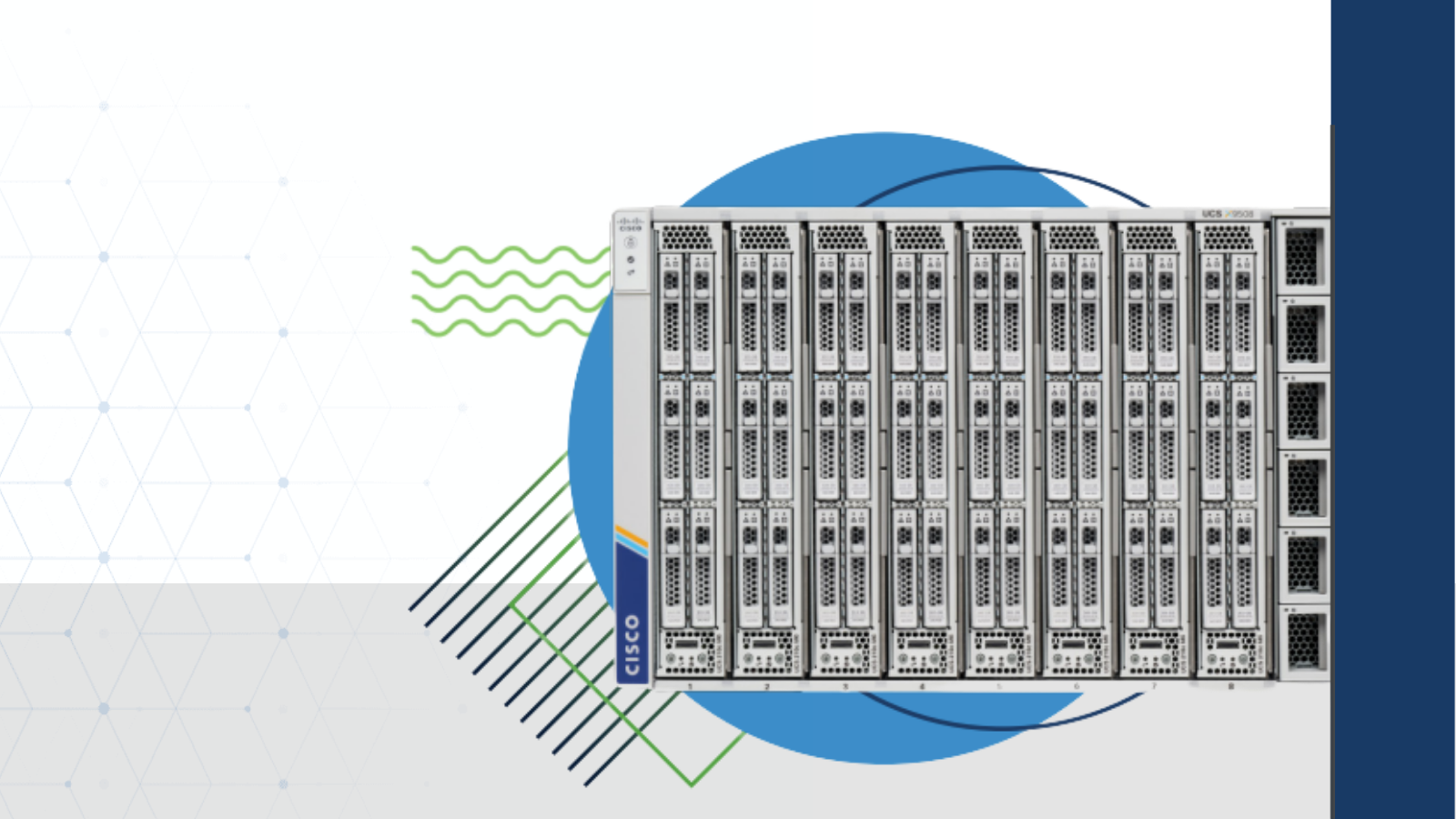How a Hybrid Cloud Infrastructure Saves Money over Traditional Blade Computing
An increasing number of technology leaders like you are modernizing their IT infrastructure from traditional blade computing to hybrid cloud environments while reducing their operating costs.
Today’s unified computing system (UCS) solutions for hybrid cloud operations are flexible, agile and scalable. They increase efficiency and improve control over IT architecture by converging computing, networking, virtualization and storage elements and resources into a single system.
By comparison, traditional blade computing solutions require multiple components, involve greater complexity and engage more staff time to manage. That’s why this type of traditional infrastructure typically is more expensive to maintain. Consider the following:
- What can your organization gain by moving from blade to hybrid cloud infrastructure?
- And how much money can your organization save in the process?
This blog post answers your questions.
Why should we modernize our infrastructure to a hybrid cloud environment now?
First, a hybrid workforce is the new business norm, with employees operating in company facilities, at remote locations, and often moving between both in the same month, week, or even day. This trend is driving demand for an increasingly diverse array of applications. In fact, research by Cisco predicts the number of applications running in data centers and at the network’s edge will increase by 300% within a year.
Second, delivering this robust application set to the expanding ranks of hybrid workers is becoming progressively more difficult by conventional means. In a recent Cisco study, over 60% of organizations surveyed cited siloed teams and manual processes as the top bottlenecks in their app-delivery pipelines.
A hybrid cloud environment addresses both these challenges because the computing workload flows freely, fluidly and securely between on-premises private and public platforms. And it does so efficiently every day around the clock, from the infrastructure’s core to the farthest point on the network’s perimeter.
Why do traditional blade computing environments no longer fit our needs?
In conventional server environments using blade infrastructure, network devices, storage modules and management tools are distinct components requiring individual connections to separate ports.
This type of complex configuration limits the flexibility, agility and scalability of the solution, and adds unnecessary cost. With so many moving parts, adding innovative technology takes more labor, adjusting to changing conditions takes more time and adapting infrastructure for growth takes more investment.
To compete in today’s fast-paced business atmosphere, your company can’t afford those restrictions, especially as we work our way out of the pandemic.
What are the advantages of today’s UCS solutions for hybrid cloud infrastructure?
Cisco designed its new UCS X-Series to automate, optimize, and maintain today’s hybrid cloud infrastructure on a global scale.
X-Series solutions are modular systems built for handling workloads for traditional compute and modern technologies, such as machine learning and artificial intelligence (AI). They are a composable infrastructure that you can assemble from the cloud and rapidly deploy around the globe.
Cisco built UCS X on its Intersight management platform, an intelligent SaaS tool that simplifies orchestration of network resources and performance from a high point of visibility and single locus of control.
UCS X delivers these advantages:
- High flexibility: Modular design enables your network to run any application. By automating processes such as scripting and streamlining interfaces, UCS X simplifies and optimizes the configuration and operation of new and existing apps for you.
- High agility: Full visibility and consolidated control enables you to respond to evolving business conditions and shift computing workloads at high speed. Businesses experience gains in time to market as high as 65% over traditional servers.
- Highly scalable: The larger your data center, the greater is the efficiency you experience. As the number of UCS systems implemented increases, efficiencies multiply exponentially. Intersight provides an additional 20%-25% increase in efficiency when managing UCS groups compared to clusters managed individually, like blades.
As noted earlier, conventional infrastructure solutions like blade servers are a complicated collection of disparate components. Because you must manage each cluster separately, the time, effort and investment needed to manage and maintain this infrastructure multiplies as your computing needs escalate and diversify.
This operating equation is problematic in the era of the hybrid workforce, as your network boundaries not only expand but shift day to day. To provide the resilient, redundant infrastructure your business needs today, you will always need more people, more procedures and more money.
Also, the more separate clusters you must manage and maintain, the greater your risk of downtime. Experts say the failure rates for traditional network servers increase with time. As your blades age, they become more likely to experience outages. According to analyst estimates, every hour of downtime can cost $100,000 or more in lost revenue and user productivity and IT service costs, depending on the size of the organization.
How much money can a hybrid cloud infrastructure save my company?
The business needs and computing requirements of each organization vary, but in general moving from blades to UCS X-Series solutions powered by Intersight can save $2000 to $3000 per server.
These savings come from two factors:
- Reducing your operating costs.
As explained earlier, X-Series efficiencies increase exponentially as your computing demand grows. This kind of performance means a smaller infrastructure can handle bigger and bigger workloads and reach more and more users without corresponding increases in operating costs.
- Reducing your licensing costs.
As described above, conventional network infrastructure clusters like blades operate separately requiring different management and maintenance plans and processes. Licensing is a significant element in these requirements, as individual components (such as virtualization tools) carry their own license fees.
Packaging UCS X-Series solutions with Intersight eliminates this licensing expense.
How can I move to a hybrid cloud infrastructure?
Find a long-time Cisco partner (like IE) with a lengthy record of success implementing and managing IT infrastructures for their customers. It’s also important they’re experts in Cisco’s UCS X-Series technology and will work to plan your transition with you.
How can I learn more?
Download our hybrid cloud computing eBook




